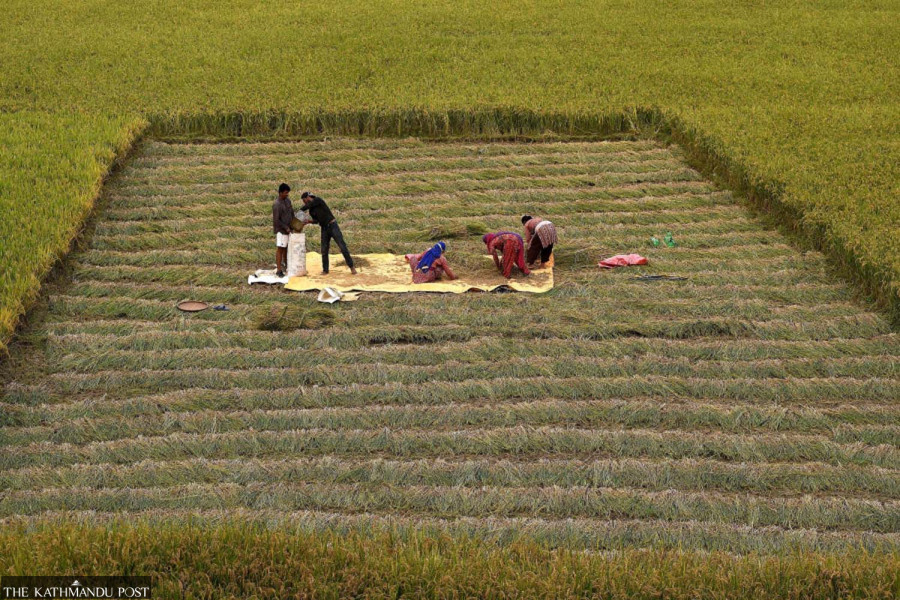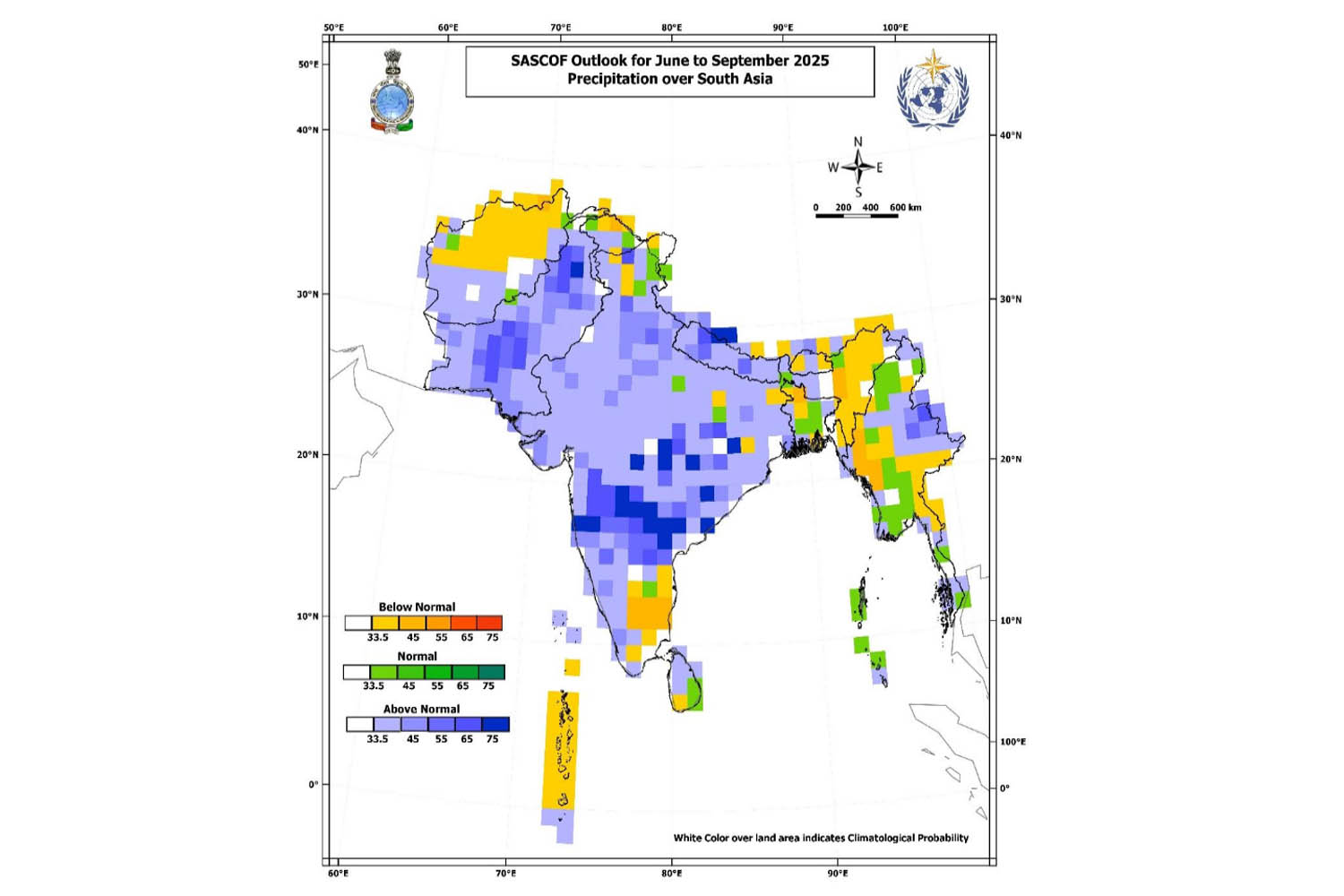Money
Nepal set for intense monsoon. Boost for crops, peril for people
Monsoon rains are vital for Nepal’s Rs6.17 trillion economy, but timely fertiliser supply is key to boosting yields.
Sangam Prasain
In 2025 Nepal is likely to witness above-normal monsoon rains for the second consecutive year, according to a regional consensus among South Asian meteorologists. This has sparked optimism over better crop yields and provided a much-needed lift for the country’s struggling economy.
But the forecast also comes with a warning. Above-normal rains could spell more disasters, including flash floods and landslides.
A statement issued by the 31st Session of the South Asian Climate Outlook Forum on April 29 indicated that most parts of South Asia are expected to receive above-normal rainfall during the 2025 southwest monsoon season, which spans from June to September. However, some parts in the north, south, east, and northeast of South Asia may experience normal to below-normal rainfall.
The regional climate outlook was jointly prepared by all nine National Meteorological and Hydrological Services of South Asia, with the assistance of international experts, during the Pune, India session.
Matina Joshi Vaidhya, spokesperson for the Ministry of Agriculture and Livestock Development, welcomed the forecast.
She said the government has taken several steps to stimulate agricultural growth, including legal reforms to ease fertiliser import procedures to gain the most from the rains.
An amendment to the public procurement law aims to address long-standing issues through timely acquisition of chemical fertilisers.
Traditionally, it takes around six months to procure fertiliser following a global tender under the Public Procurement Act. The entire farming cycle can be disrupted when tenders are cancelled due to price fluctuations or other uncertainties.
Even government-to-government arrangements, introduced to streamline the process, have faced bureaucratic hurdles.

The recent amendments to the Public Procurement Act now allow for fertiliser import, reducing the tardy and lengthy process.
Similarly, according to Vaidhya, the finance ministry has guaranteed an “assured” financial resource, enabling the government to buy chemical fertilisers even at the start of the fiscal year in mid-July.
This guarantees resource availability during the crucial paddy transplantation season, which typically begins in June.
The government has allocated Rs27.95 billion for fertiliser procurement for the current fiscal year ending mid-July. It aims to purchase 550,000 tonnes of chemical fertiliser to meet agricultural demands.
As of April 27, the ministry reported a stock of 57,987 tonnes, comprising 18,844 tonnes of urea, 27,315 tonnes of diammonium phosphate (DAP), and 11,827 tonnes of potash.
An additional 94,000 tonnes of urea are currently en route to Nepal and are expected to arrive in batches, with the final shipment scheduled for the third week of May. Moreover, 25,000 tonnes of DAP, the world's most widely used phosphorus fertiliser, will arrive by the end of May, just before the transplantation period.
Experts, however, warn that based on the current depleted stock and possibility of delayed imports, things could still go haywire.
Nepal requires 210,000 tonnes of fertiliser for the paddy planting season and needs at least 150,000 to 170,000 tonnes at hand to avoid severe shortages. Paddy transplantation generally occurs from early June to August, though a delayed monsoon can extend the season into September.
Vaidhya expressed confidence that fertiliser shortages are unlikely this year due to the government’s revised arrangements.
Monsoon rains are vital for Nepal’s Rs6.17 trillion economy, delivering nearly 80 percent of the water essential for agriculture and replenishing reservoirs and aquifers.
As nearly half of Nepal’s farmland lacks irrigation, the June-September rains play a pivotal role in crop production. The monsoon is therefore seen as a critical macroeconomic factor, closely monitored by investors, policymakers, and consumers alike.
As Nepal’s economy heavily relies on rural areas, monsoon performance directly influences consumer spending.
The agricultural sector contributes about 25 percent of Nepal’s GDP and employs over 60 percent of the population. Experts emphasise that timely and above-normal monsoon rains improve the speed and success of crop transplantation, resulting in higher yields. Greater output usually leads to lower food prices, helping to keep inflation within the government’s target range.
It also increases rice availability, potentially allowing countries like Nepal to import less.
Last monsoon, Nepal saw one of the fastest paddy transplantation rates in decades, thanks to above-normal rainfall. This contributed to a higher overall paddy yield. In particular, Madhesh province, which typically suffers from inadequate rain, recorded a double-digit increase in production, lifting national output.
According to the Ministry of Agriculture and Livestock Development, paddy production grew by 4.04 percent year-on-year, reaching a record 5.95 million tonnes.
As summer crops like paddy serve as a primary income source for over half the population, this growth has had a significant economic impact. Paddy cultivation alone accounts for about 5 percent of Nepal’s GDP, and the entire agricultural sector, contributing 25.16 percent to GDP, is projected to grow by 3.28 percent this fiscal year.
Monsoon onset typically occurs on June 13 and withdraws by October 2.
But while last year’s heavy rains substantially benefited the farming sector, they also led to widespread damage.
The World Bank’s recent Nepal Development Update noted that severe floods and landslides from September 26 to 28, caused by unusually intense monsoon activity intensified by climate change, resulted in damage amounting to 0.8 percent of the GDP. The total damage is estimated at Rs46.7 billion, affecting infrastructure, agriculture, and social sectors.
Agricultural losses alone reached Rs7.2 billion, with vast farmland submerged, crops destroyed, and many livestock lost.
Ram Bahadur KC, spokesperson for the National Disaster Risk Reduction and Management Authority under the Home Ministry, said that a draft of the work procedure for disaster risk management is almost finalised after four rounds of consultations with a task force.
He noted that the plan would incorporate lessons from last year’s late September disaster and analyse all potential risks. The authority also awaits official monsoon forecasts from the Department of Hydrology and Meteorology before finalising its disaster preparedness strategies.




 20.12°C Kathmandu
20.12°C Kathmandu














